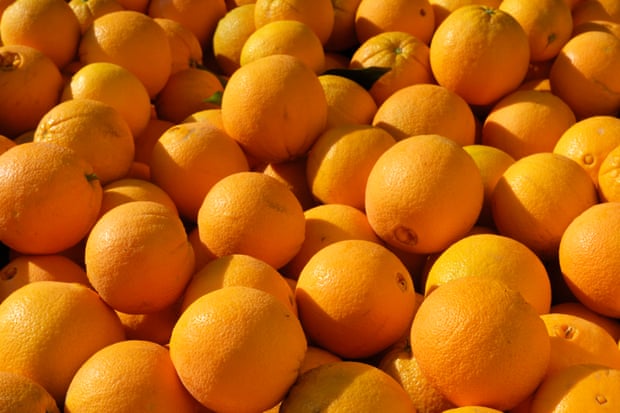As Australia enters the final month of winter, traditional root vegetables remain some of the best buys on the shelves, along with a plentiful supply of citrus.
“Potatoes and pumpkin are always good buys,” says Luke Bartlett from Luke’s Potatoes and Pumpkin in Brayton near Goulburn, about 180km south-west of Sydney.
“We do one variety that covers everything – Sebago, which is a good all-rounder, are currently sitting at about $2 a kilo.”
Australia’s inflation rate reached 6.1% in the June quarter and fruit and vegetable prices suffered a 5.8% price increase as a result of bad weather in recent months.
Even though the wet weather has played havoc on harvests, and the costs of farming have increased with rising fuel and fertilizer prices, Bartlett is selling three pumpkins for $10, which equates to roughly 50 cents a kilo. Kent and butternut varieties in major supermarkets range from $2 to $6 for half a pumpkin.
Pumpkins are a roasting dish staple perfect for cooking in bulk for salads and leftover lunches, and also make a great classic winter soup. Sweet potato is another star of the root vegetable category and costs around $1.50 a kilo in supermarkets.
Soft, starchy sweet potatoes are easily transformed into everything from mash to fries, but can also be the star of the meal when stuffed and baked. For a more adventurous dish, try Yotam Ottolenghi’s winter spiced sweet potato cheesecake with an amaretti biscuit crust.
leafy greens
After challenging wet weather, some green vegetables are beginning to thrive again, says Teck Wong, a vendor at Goodwill Projects’ Milton Markets in Brisbane.
“The weather is being much kinder to most of your greens like baby spinach, kale, broccoli… with steady supply meaning prices are coming down slowly,” says Wong.
Meng Sun from Sun’s Fresh Farm in Horsley Park in western Sydney recommends sticking to hardy vegetables such as fennel, leeks and celery, and leaving herbs to garnish dishes behind.
“Forget about dill, coriander, mint and parsley. They’re all very scarce because they’re the hardest to grow,” says Sun.
While beans, snow peas and sugar snaps are usually good buys at the end of winter, Sun says the rain has meant their usual crop – two to three fields worth of beans – all have blemishes, which also drives up the price.
“Usually during this season, they would be $6 to $8 a kilo,” says Sun. “At the moment they are at least $10 to $12 a kilo.”
One customer told Sun that at a nearby supermarket, beans were fetching a price of $30 a kilogram.
Prices such as these are a good reminder that frozen vegetables are a thrifty alternative to fresh produce and can be easily added to fritters and pasta dishes. Staples such as broccoli remain at about $9 a kilo in supermarkets, but that price drops to around $6.40 per 1kg when frozen.
Supply of cabbage and lettuce continues to be limited, with prices upwards of $6 each for savoy, green cabbage and iceberg lettuce in supermarkets. But Asian greens such as bok choy, choy sum and Chinese broccoli remain more affordable at about $2.50 a bunch.
For fruit: make it citrus

The best produce to buy in August is citrus, according to Sun, with oranges selling for under $2 a kilo. “We were selling a big box of navel oranges for $10 a box which weighed about 18 kilos.”
In major supermarkets, oranges are priced around $2.50 a kilo and are the perfect sweet pairing with fennel in salads.
Other fruit can be hit and miss, according to Wong in Brisbane. Avoid out-of-season fruits such as berries if you’re looking for a product in premium condition. “With the cooler weather, bananas, pineapple, tomatoes and pawpaw are taking longer to ripen … therefore reducing the amount available, causing a spike in price.”
Avocados continue to be plentiful and as consumers are being asked to indulge to help relieve Australia’s current glut of the fruit. They are versatile and cheap, and can be used in everything from ice-cream to quiche.
buy
potatoes
pumpkins
carrots
asian greens
fennell
Leek
Celery
oranges
avocado
Watch
Prices are expected to ease on these over the coming month.
silverbeet
kale
broccoli
baby spinach
Avoid
beans: have been damaged by the rain and are in short supply, driving prices up.
Berries: are out of season and not of premium quality.
Fresh herbs: a luxury unless you’re growing your own.
Lettuce: remains expensive.